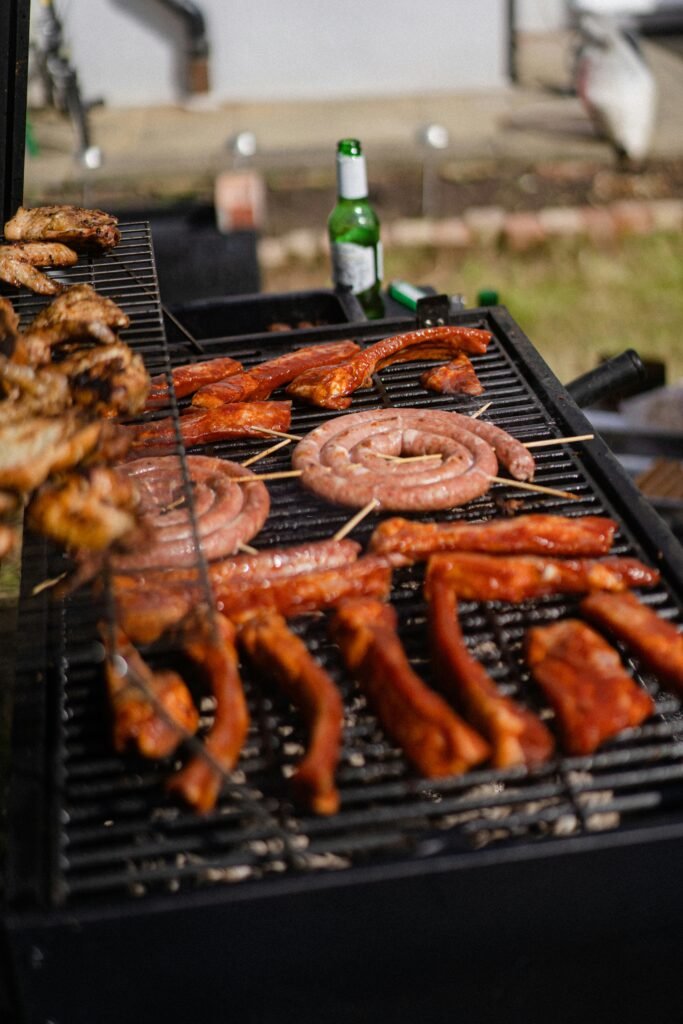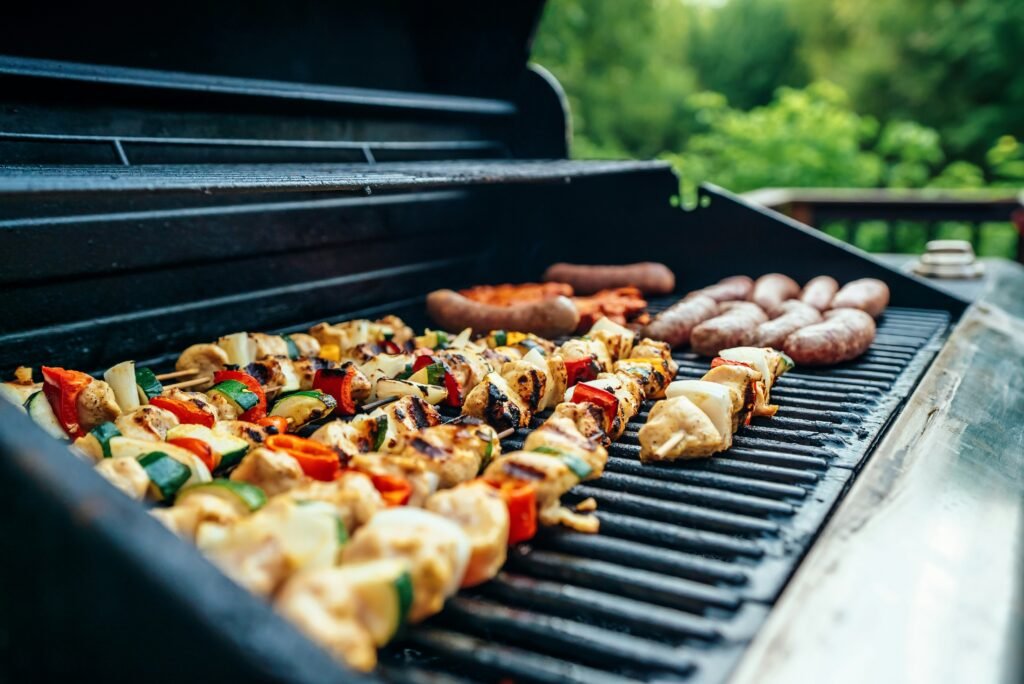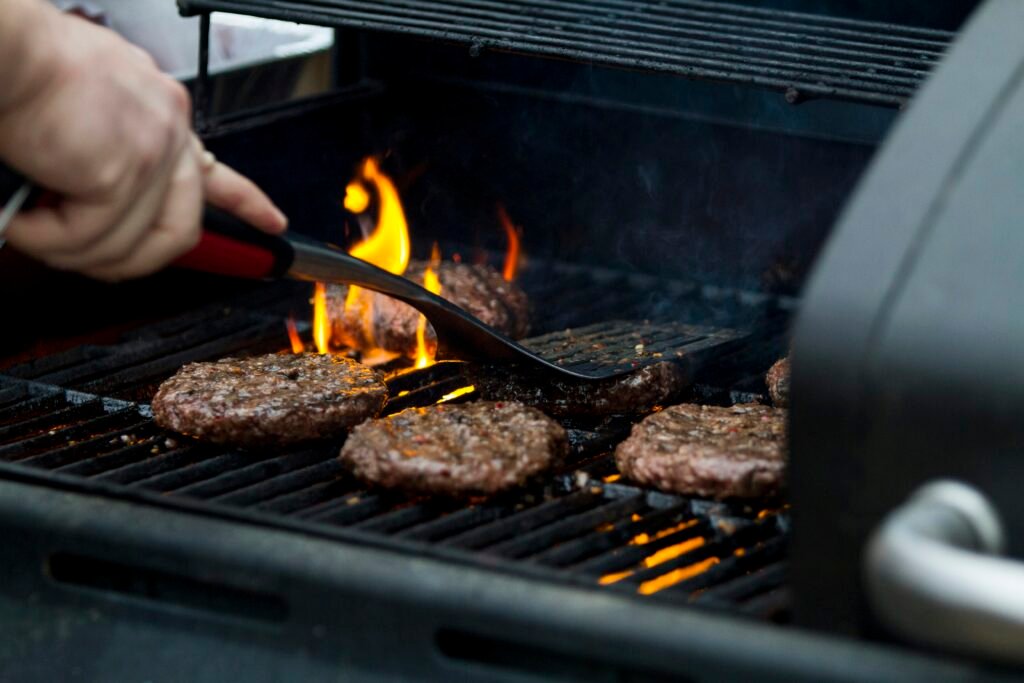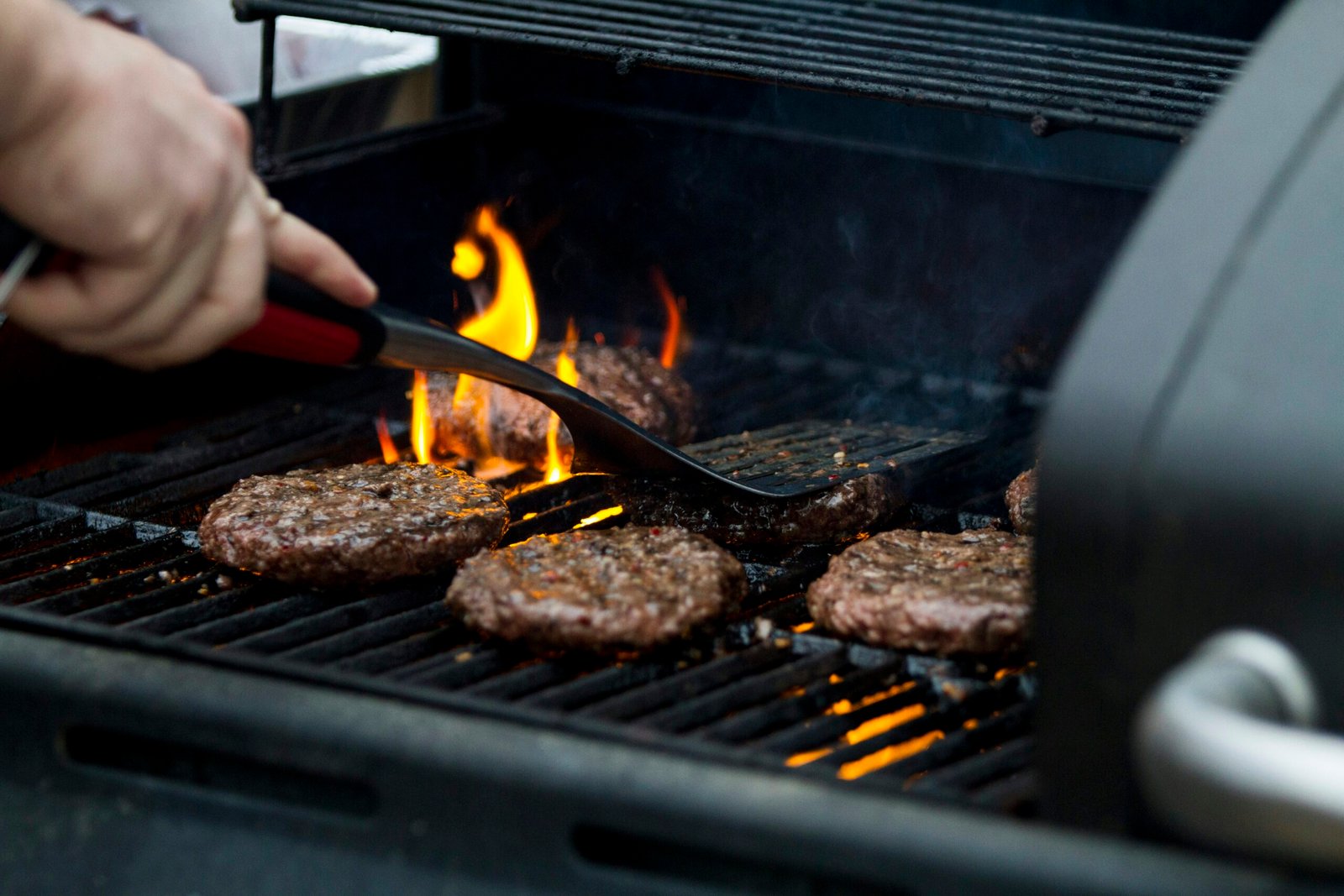Imagine this: it’s a beautiful summer day, the sun is shining, and you’re ready to fire up your barbeque grill for some mouthwatering burgers and sizzling steaks. But, before you can start grilling, you may find yourself wondering how to create a two-zone fire on your grill. Don’t worry, we’ve got you covered. In this article, we will show you an easy and effective method to achieve that perfect two-zone fire, ensuring your food is cooked to perfection every time. So, grab your grill tools and let’s get started on mastering the art of two-zone grilling!

Understanding the Concept of a Two-zone Fire
Definition of a two-zone fire
A two-zone fire refers to the setup of a BBQ grill where the coals or burners are divided into two distinct heat zones: a hot direct heat zone and a cooler indirect heat zone. In this setup, the hot zone provides intense, direct heat for searing and quick cooking, while the cooler zone allows for slower, more gentle cooking.
Why create a two-zone fire on a BBQ grill
Creating a two-zone fire offers greater versatility and control when grilling. It allows you to cook a wide variety of foods at different temperatures without the risk of overcooking or burning. By having both a direct heat zone and an indirect heat zone, you can sear steaks on high heat while simultaneously cooking delicate items like fish or vegetables at a lower temperature. This setup ensures that all your food is cooked to perfection.
Understanding the difference between direct and indirect grilling
Direct grilling involves cooking food directly over the heat source. It is ideal for quick-cooking items like burgers, steaks, and chicken breasts. The food is placed directly above the hot coals or burners, allowing for intense heat and sear marks on the meat. Indirect grilling, on the other hand, involves placing the food away from the heat source, allowing for slower, more even cooking. It is perfect for larger cuts of meat or delicate items that require gentle heat to cook through without charring.
Preparing your Barbeque Grill
Assembling the grill
Before you start setting up your two-zone fire, it’s essential to assemble your BBQ grill properly. Follow the manufacturer’s instructions, ensuring that all parts are securely connected. This will ensure the safety and stability of your grill while you’re cooking.
Checking safety measures
Safety should always be a priority when grilling. Before lighting the fire, double-check that all safety measures are in place. Ensure that the grill is located in a well-ventilated area, away from any flammable materials. Check that the propane tank (if using a gas grill) is properly connected and that there are no leaks. If you’re using a charcoal grill, make sure there are no loose ash or embers from previous uses.
Ensuring the grill is clean
A clean grill is essential for optimal grilling performance and food safety. Before setting up the two-zone fire, take the time to clean the grill grates thoroughly. Use a grill brush to remove any leftover residue from previous cookouts. Additionally, clean the bottom of the grill to remove any accumulated grease or ashes that can affect the heat distribution.
Choosing The Right Grill Type
Gas vs. Charcoal grills
When it comes to choosing a grill, you have the option of either a gas or a charcoal grill. Gas grills are convenient and easy to use. They provide instant heat and temperature control, allowing for quick and efficient cooking. On the other hand, charcoal grills give you that authentic smoky flavor and the satisfaction of cooking over an open flame. They require more effort and time for setup but offer a unique grilling experience.
Examining the pros and cons of each type
Gas grills are favored for their convenience and ease of use. They heat up quickly and offer precise temperature control, allowing you to adjust the heat as needed. Additionally, they are generally easier to clean and maintain compared to charcoal grills. However, gas grills may lack the smoky flavor that charcoal enthusiasts prefer. They also require a propane or natural gas source.
Charcoal grills, on the other hand, provide that distinct smoky flavor that many grillers love. They allow you to achieve high temperatures quickly and provide a more traditional grilling experience. However, charcoal grills require more time and effort to set up and may pose challenges in temperature control. They also generate more ash, which requires cleaning after each use.
Ultimately, the choice between gas and charcoal grills boils down to personal preference, convenience, and the desired grilling experience.
Setting up a Two-zone Fire on a Charcoal Grill
Organizing the charcoal
To set up a two-zone fire on a charcoal grill, start by arranging the charcoal in a two-zone configuration. One side of the grill should have a thick layer of charcoal for direct high heat, while the other side should have fewer coals for indirect cooking. This can be achieved by banking the coals on one side or using charcoal baskets to separate the coals.
Positioning the grate
After arranging the charcoal, position the grill grate. Ensure that it is secure and level, allowing for even cooking. Place the grate over the coals on the direct heat side and ensure that there is enough space on the indirect heat side to accommodate larger cuts of meat or other items.
Grill lid placement
Once the coals and grate are in place, it’s crucial to position the grill lid properly. For a two-zone fire, leave the lid off on the direct heat side to allow for easy access when searing or cooking directly over the coals. On the indirect heat side, place the lid on to create a convection-like environment for more even cooking.

Setting up a Two-zone Fire on a Gas Grill
Manipulating the burners
To create a two-zone fire on a gas grill, you need to manipulate the burners. Start by preheating the grill with all burners on high heat for several minutes. Then, turn off one or more burners to create an indirect heat zone. This means that the burners on one side of the grill will be left on high heat for direct grilling, while the other side will have no heat or low heat for indirect cooking.
Placement of grill grates
After adjusting the burners, place the grill grates back onto the grill. Ensure that they are level and securely positioned. The hot side of the grill should have the grates directly above the burners, while the cool side should have the grates in place without direct heat underneath.
Regulating the temperature
Gas grills offer precise temperature control, allowing you to regulate the heat easily. Adjust the knobs or controls to achieve the desired temperature for both the direct and indirect heat zones. The temperature can be further controlled by partially closing or opening the grill lid vents, which affect airflow within the grill.
Controlling The Temperature
Understanding grill temperatures
Grill temperatures play a crucial role in achieving the desired cooking results. It’s essential to understand the different temperature ranges for direct and indirect grilling. Direct grilling typically requires high heat, often around 400-500°F (204-260°C), for searing and quick cooking. Indirect grilling, on the other hand, calls for lower temperatures, typically around 225-350°F (107-177°C), for slower and more even cooking.
Using thermometers
To ensure accurate temperature control, it is highly recommended to use a grill thermometer. This will help you monitor the temperature inside the grill and make adjustments as needed. Place the thermometer probe near the food on the grill grate to get the most accurate reading.
Adjusting grill vents or gas control
For charcoal grills, airflow is essential for temperature regulation. Opening or closing the grill vents can increase or decrease the heat. More airflow increases the flames and heat, while less airflow reduces the heat intensity. On gas grills, temperature control is achieved by adjusting the gas control knobs. Turning the knobs higher increases the heat, while lowering them reduces the temperature.

Maintaining Your Two-Zone Fire Grill
Cleaning techniques
Proper cleaning and maintenance of your grill are crucial for its longevity and performance. After each use, brush the grill grates to remove any food remnants. For charcoal grills, remove and dispose of the ashes once they are completely cool. Gas grills require regular cleaning of the burner tubes and drip trays to prevent grease buildup. Additionally, periodically check and clean the grill’s exterior to remove any dirt or debris.
Preventing flare-ups
Flare-ups, where flames suddenly rise excessively, can be dangerous and result in burnt food. To prevent flare-ups, keep the grill clean by removing excess grease and oil from the grates and drip trays. Additionally, trim excess fat from meats to minimize the drippings that can cause flare-ups.
Observing fire control
Maintaining fire control is crucial for successful grilling. For charcoal grills, monitor the charcoal level and add more coals as needed during long cooking sessions. On gas grills, check the propane or gas levels to ensure uninterrupted fuel supply. It’s important to have spare charcoal or propane on hand to avoid running out during a grilling session.
Safety Precautions for Using a Two-zone Grill Fire
Keeping a safe distance
Grilling involves an open flame, so it’s essential to keep a safe distance from the grill. Maintain a clear area around the grill and ensure that children and pets are kept away. Never leave the grill unattended while it is in use.
Using appropriate grilling tools
To avoid accidents and injuries, always use the appropriate grilling tools. Long-handled tongs, spatulas, and forks designed for grilling will help you handle the food safely without getting too close to the hot flames. Heat-resistant gloves are also useful for added protection.
Properly extinguishing the fire
After grilling, it’s crucial to properly extinguish the fire. For charcoal grills, close the vents and place the lid on until the coals are completely cool. Avoid pouring water directly on the coals, as this can create steam and potentially cause burns. For gas grills, turn off the burners and the gas supply. Allow the grill to cool down completely before covering it or storing it away.
Useful Tips for Perfect Two-Zone Grilling
Choosing the right quality of meat or veggies
The quality of your ingredients significantly impacts the final result. When grilling, choose fresh, high-quality meats, seafood, and vegetables for the best flavor and texture. Look for marbled cuts of meat, vibrant vegetables, and firm fish to ensure optimal grilling results.
Properly marinating ingredients
Marinating your ingredients adds flavor and helps tenderize the food. Before grilling, marinate meats, poultry, and even vegetables in your choice of marinades or spice rubs. Allow them to sit in the marinade for at least 30 minutes to a few hours for the flavors to penetrate the food.
Correct timing
Timing is crucial when grilling. Different foods require different cooking times. Keep track of how long each item has been cooking and adjust accordingly. Use a kitchen timer or a smartphone timer to ensure that you don’t overcook or undercook your food.
Troubleshooting Common Problems
Dealing with too much smoke
Excessive smoke can be caused by various factors, including grease buildup, burning marinades, or excessive fat drippings. To minimize smoke, clean the grill thoroughly before each use, trim excess fat from meats, and avoid flare-ups. Additionally, avoid using highly sugary marinades that can burn and produce smoke.
When food gets stuck on the grill
Food sticking to the grill grates can be frustrating. To prevent this, preheat the grill grates before cooking and brush them with oil to create a non-stick surface. Additionally, avoid flipping the food too early or too frequently, as it may not have had enough time to develop a crust.
When the fire goes out midway
Running out of fuel or having the fire unexpectedly go out can be disappointing. To prevent this, always have extra charcoal or propane on hand before starting a grilling session. Additionally, make sure the charcoal is properly lit and add more as needed throughout the cooking process. For gas grills, ensure that the gas tank is adequately filled and that the burners are unobstructed.
Grilling over a two-zone fire is a game-changer when it comes to achieving perfectly cooked meals. With a clear understanding of the concept and the right techniques, you’ll be able to enjoy the versatility and control that a two-zone fire offers on your BBQ grill. Remember to prioritize safety, maintain proper temperature control, and experiment with different cooking methods to elevate your grilling skills. Happy grilling!

